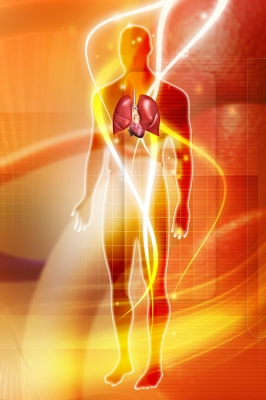
Do you know that breathing is the only physiological function which is both voluntary and involuntary?
This means that breathing can be controlled consciously by the mind or it can be allowed to function automatically like other physiological processes like digestion under the control of the body’s central nervous system. Breathing is therefore an important bridge between the mind and the body and can influence them both.
The trillions of cells in our body need energy and they acquire this energy through the nutrients we eat and through a constant supply of oxygen. Every cell breathes – the process of respiration in which oxygen is inhaled into the living cells and carbon-dioxide is exhaled from them is a fundamental phenomenon of life which is universally present in every type of living organism. When air enters our body, oxygen is transferred from a gas medium to the blood at the level of capillaries surrounding the lung tissue. This “liquid” breath is then transported throughout the body riding on the back of haemoglobin. It is moved from large blood vessels such as arteries to smaller blood vessels, finally reaching the tiny thin-walled capillaries that supply the cells. It is at the level of the capillaries that oxygen is given up into the tissue and exchanged for carbon dioxide. This de-oxygenated blood which looks bluish, flows back through the veins, travelling into larger and larger blood vessels until it reaches the heart where it is once again pumped out to the lungs to receive fresh supply of oxygen. Hence, respiration is a continuous requirement for obtaining an adequate supply of oxygen. This process describes the External Respiration.
At Internal Respiration (also known as Cellular Respiration), every cell in the body alternately expands and condenses in an on-going rhythmic state of respiration. While the external respiration involves mainly with inhalation and exhalation, the cellular respiration also contains moments of stillness and rest in between expanding and condensing. If you can bring awareness to these moments of stillness and rest, it can be a deeply rejuvenating and restful experience. The cells will be alive and healthy when cellular breathing happens, however, the cells will be in a state of struggle, confusion and disorder if the cellular breathing is restricted. When cellular respiration ceases, the cells are dead.
What is the best way to breathe? The breathing should be natural and effortless. Both the primary and secondary breathing muscles are engaged such that a natural body oscillation occurs between expansion during inhalation and retraction during exhalation. This oscillation has a way of travelling sequentially through the body from the center to the periphery. Like a full blown dandelion flower radiates from its core, the breath expands in all directions yet we are filled with a sense of ease and relaxation.
Another dimension of breathing is our breathing patterns reflect our emotional and mental states. For example when you are angry, your breathing will be jerky and short, when in fear, you will momentarily cease to breathe, you gasp during amazement, you choke during sadness, you sigh in relief, in childbirth you do controlled breathing to alter the pain threshold, you breathe slowly and steadily during periods of relaxation and awareness. In short, our breathing changes during periods in which our mind is subject to passing thoughts and emotions of a random nature. An important truth you need to know – when your breathing becomes unconsciously altered the autonomic part of your nervous system resets itself so that breathing becomes automatically distorted and restricted unless you consciously change it by bringing in awareness.
While it is difficult to control the mind and emotions directly, they can be mastered indirectly by using the breath. In Vedic tradition, we use slow deep breathing as a form of meditation technique to eliminate distracting thoughts or inner chatters. The modern research and studies had confirmed the positive effect of breathing exercises in the treatment of hypertension, anxiety disorders and other psychosomatic disorders.
In yoga, breathing is essential for helping students to develop a self-reflective consciousness and an inner guide so that they know how to access their most readily available and renewable energy source and release of unnecessary tension. The breath is an honest guide without ego or ambition. It facilitates exploration of movement without injury and above all, breathing helps students to experience themselves as intrinsically whole NOW at all levels – physical, psychological, emotional and spiritual. The masters and mystics go a step deeper beyond the physiology into the prana (life energy) which is all pervasive in the Universe. Look out for the next article where we will explore breathing at the pranic energy body.
Hi there,
Thank you for your comment. 🙂
You can refer to Donna Farhi’s website http://www.donnafarhi.co.nz/donna & buy the book – The Breathng Book.
Warmest regards
Siew Yong